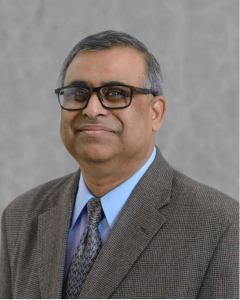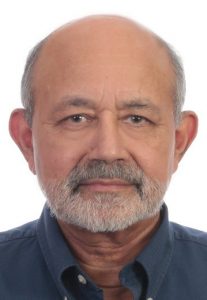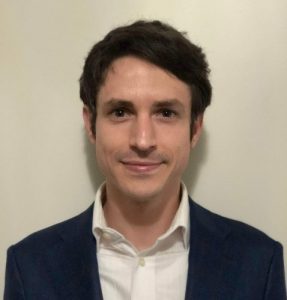SiC Power Device Design, High Performance Power Electronics Module Packaging with New Organic Substrates, HV SiC Devices Based High Power/Voltage Power Converters and Applications Enabled by Advances in Medium Frequency Magnetics
Abstract:
The tutorial will outline the advantages of SiC over other power electronic materials, and will introduce SiC devices currently developed for power electronic applications. The design of SiC MOSFETs, JBSFETs, BiDFETs and Junction Barrier Schottky and PiN diodes will be discussed, with an emphasis on their performance advantages over those of their Si counterparts. In particular, the tutorial will stress in-depth the design and fabrication of SiC MOSFETs, which are being inserted in the majority of SiC based power electronic circuits. Device reliability will be reported through exemplary hard switching, unclamped inductive load results and short circuit tests.
The tutorial will include “High Performance Power Electronics Module Packaging with New Organic Substrates”: The demand for increased power density and performance through package scaling has led to ever-growing heat fluxes that need advanced thermal management. However, the real challenges for future WBG power modules, such as the 1.2kV BiDFET or 6kV SuperCascode switches, are small size and low parasitic inductance to reduce switching losses and improve module speed. This tutorial introduces circuit structures and module packaging that use new organic dielectrics that can withstand high voltage (25kV/mm), operate up to 250°C continuously, has a thermal conductivity of 10W/mK, low modulus for longer reliability, and is less than one-tenth the cost of DBC modules. The primary advantage in moving to organic laminates allows highly reliable layering of field plates and ground planes for E-Field and EMI management similar to multiplayer PCB. Design examples of a Solid-State Circuit breaker using both BiDFETS and SuperCascode switches will be given.
The tutorial will outline the applications of high power/voltage power converters in all industry sectors – HVDC, FACTS and power quality, MV motor drives (including high-speed machines with high fundamental frequency), MVDC grids, MV grid connected converters for renewables such as solar, wind, etc., MV converters for mining applications, MV converters for traction applications, MV converters for industrial applications such as steel mills, cement, and others; with present OEM solutions. The improvements required in efficiency, power density, specific power and volumetric density metrics are forcing the industry to re-evaluate present state of the art Silicon power devices based solutions in terms of the potential offered by recently developed HV SiC power devices for HV and high power (MW class) power converters. The opportunities for HV SiC devices for MV and high power converters and utility applications and the challenges to apply these HV SiC devices successfully will be presented in-depth with SiC device voltage ranges from 1200V to 1700V MOSFETs, and HV 10 kV – 15 kV MOSFETs, JBS diodes, and 15 kV SiC IGBTs. The potential and challenges of the HV 10 – 15 kV devices to enable MV power conversion systems, including MV motor drives, FACTS and MVDC grids will be explored with demonstrated application examples of SST (Solid State Transformer), MV SiC power converters for grid tied solar applications, MV motor drives, shipboard power supply applications and MVDC grids. The roadmap of HV SiC power devices in terms of cost targets, module packaging, reliability qualification and standards compliance of HV SiC devices will be addressed. Some representative work with GaN devices and converters will also be covered.
The tutorial will also cover advances in medium frequency magnetics for WBG devices based power converters and especially for high power converters. This tutorial will highlight the latest advances in magnetic material qualification and characterization. It will provide an overview of magnetic core loss models, discuss implications for thermal modeling and highlight differences in basic magnetic materials. It will provide guidance for material adoption as well as introduce novel techniques for understanding leakage inductance and anomalous losses due to leakage flux.
Instructors:
Subhashish Bhattacharya received his B.E. (Hons), M.E. and PhD degrees in Electrical Engineering from Indian Institute of Technology-Roorkee (formerly University of Roorkee), India in 1986, Indian Institute of Science (IISc), Bangalore, India in 1988, and University of Wisconsin-Madison in 2003, respectively. He worked in the FACTS (Flexible AC Transmission Systems) and Power Quality group at Westinghouse R&D Center in Pittsburgh which later became part of Siemens Power Transmission & Distribution, from 1998 to 2005. He joined the Department of Electrical and Computer Engineering at North Carolina State University (NCSU) in August 2005, where he is the Duke Energy Distinguished Professor, founding faculty member and co-PI of NSF ERC FREEDM systems center (www.freedm.ncsu.edu), Advanced Transportation Energy Center [ATEC] (www.atec.ncsu.edu) and DOE initiative on WBG based Manufacturing Innovation Institute –PowerAmerica (www.poweramericainstitute.org)- at NCSU. He has authored over 500 peer-reviewed technical articles, 2 book chapters, and has 5 issued patents to his credit. A part of his PhD research on active power filters was commercialized by York Corp. for their air-conditioner chiller application. His research interests are Solid-State Transformers, MV power converters, FACTS, Utility applications of power electronics and power quality issues; high-frequency magnetics, active filters, and application of new power semiconductor devices such as SiC for converter topologies.

B. Jayant Baliga received the M.S and Ph.D degrees in electrical engineering from Rensselaer Polytechnic Institute, Troy, NY, in 1971 and 1974, respectively. He spent 15 years at the General Electric R&D Center, Schenectady, NY, leading their power device effort and was bestowed the highest rank of Coolidge Fellow. He joined NC State University in 1988 as a Full Professor and was promoted to Distinguished University Professor in 1997.
Dr. Baliga has authored 22 books, over 650 publications in international journals and conference digests, holds 121 U.S. patents, and has been honored with the National Medal of Technology and Innovation in 2011, the IEEE Medal of Honor in 2014, the Global Energy Prize in 2015, and was inducted into the National Inventors Hall of Fame as the sole inventor of the IGBT in May 2016.

Douglas C. Hopkins is a professor in Electrical and Computer Engineering, Director of the Laboratory for Packaging Research in Electronic Energy Systems (PREES), which is part of the NSF-ERC FREEDM Systems Center, and is an affiliate faculty member in the Center for Additive Manufacturing and Logistics CAMAL, at North Carolina State University. He has over 20 years of academic and industrial experience focused on high-frequency, high density power electronics with emphasis on packaging. He received his Ph.D. in Electrical Engineering from Virginia Tech, and spent his early career at the R&D centers of GE and Carrier Air-Conditioning Companies in advanced power electronics systems for military and commercial applications. He has published over 130 papers, a number with awards and is an IMAPS Fellow.

Richard Byron Beddingfield received his BS EE and MS PE in Electric Power Systems Engineering from North Carolina State University in 2014 and 2015 respectively. He completed his PhD in High Power Medium Frequency Magnetics for Power Converter Applications in 2018. He intends to continue exploring fundamental magnetic designs and materials. He will continue to explore his research interests in high temperature magnetics, strain induced anisotropy magnetic ribbon materials and wireless power transformers in an ORISE postdoctoral research fellowship with the National Energy Technology Laboratory. He joined NCSU as a postdoctoral researcher in July 2020.
